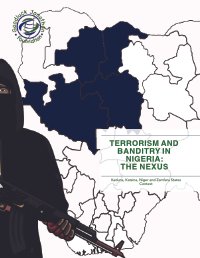By Robin S. Engel, Nicholas Corsaro and Tamara D. Herold
One of the most frequently used communication mechanisms associated with focused deterrence strategies are offender notification meetings, also referred to as “call-in” sessions. Typically, these meetings are used to communicate directly to offenders that their future violent behaviors (and those of their affiliated groups/gangs) will be responded to in a swift and predictable manner through a coordinated law enforcement effort to prioritize group violence, share information, and develop comprehensive group-focused responses (Engel, Tillyer & Corsaro, 2013). The purpose of sharing this information is to gain compliance through group pressure (Kennedy, 1997). The group/gang structure is believed to serve both as a communication vehicle, and a potential source of control, as the threat of group-focused enforcement encourages groups to police themselves (Tillyer & Kennedy, 2008). Additional messages regarding the availability of assistance, social services, and job opportunities are often conveyed. Finally, most meetings include some form of community messaging that describes the harm inflicted by violence to individual victims and the larger community, along with a plea to change their behavior. This type of “community moral voice” is designed to send clear messages of non-violence, and rejecting norms that promote violence (Brunson, 2015). Offender notification sessions are designed to alert offenders and alter their decision-making by conveying possible sanctions while offering available services, contingent upon the path that the offender (typically on probation and/or parole) chooses, be it desistence or continued high-risk behavior. Initiatives built on call in sessions ultimately seek to change offender behavior by blending law enforcement, community mobilization, and social service provisions in a targeted and directed fashion. While initiatives such as focused deterrence strategies, which rely heavily on offender notification sessions, have often corresponded with reductions in citywide gun violence and gang homicides, the direct influence of call in sessions on individual-level behavior (for those called-in) is far less understood. The following study examines the impact of offender notification meetings – with messaging heavily focused on compassion, support, and the harm inflicted by violence – on the likelihood of offender recidivism in Las Vegas, Nevada. Officials from the Las Vegas Metropolitan Police Department (LVMPD) and the Nevada Department of Public Safety, Division of Parole and Probation (NPP) worked collaboratively to conduct a series of offender notification meetings. Other components that typically accompany the implementation of focused deterrence strategies (e.g. targeted gang enforcement and social services provision) however, were not systematically implemented. Therefore, the following research represents a test solely of the impact of the offender notification meetings, answering the question of whether this form of communication with offenders has an impact on their individual likelihood of recidivism. In order to better understand the influence of call in sessions on offender recidivism patterns, officials from LVMPD partnered with researchers from the International Association of Chiefs of Police (IACP) / University of Cincinnati (UC) Center for Police Research and Policy, along with academic partners from the University of Nevada Las Vegas (UNLV) to randomize and implement an experimental trial to assess the impact of call in sessions on probationers and parolees in Las Vegas in the Spring and Fall of 2018. Using a randomized controlled trial (RCT) research design, this study addresses the following specific research questions:
1) What impact does attendance of probationers/parolees at offender notification meetings have on individual likelihood of recidivism? 2) Can a simple risk classification be developed using offender criminal histories and associations with violent gangs to assess whether risk classification correlates with offender recidivism patterns? 3) Does the impact of offender notification meetings vary based on probationer/parolees’ risk classification? Within the randomization component, probationers/parolees were first stratified into one of four possible categories dependent upon their prior violent criminal histories and current affiliation with a violent criminal gang in Las Vegas: 1) Low-Risk (neither a violent criminal history nor affiliated with a violent gang), 2) Low/Moderate-Risk (no prior violent criminal history but affiliation with a violent gang), 3) Moderate-Risk (prior violent criminal history but no affiliation with a violent gang), and 4) High-Risk (both violent criminal history and affiliation with a violent gang). A random case-control selection occurred within each risk-level stratum, and various waves of probationers and parolees who were assigned to treatment were called-in to attend notification sessions in May 2018 and October 2018. In total, 216 probationer/parolees were randomly assigned to treatment, and 300 to control groups. Probationer/parolee recidivism is the primary outcome of interest, operationalized in two forms: 1) a re-arrest of any type, and 2) an administrative failure (revocation) of probation/parole supervised by NPP. If either event occurred in the follow-up period (i.e., 12 months for May sessions, 9 months for October sessions) – the probationer/parolee (in either treatment or control condition) is classified as having recidivated. Three analytic strategies are employed for the various strata (as well as overall treatment-tocontrol comparisons) and waves of probation/parolee participants. First, a set of bivariate chisquare analyses on recidivism patterns for each risk group to set the foundation regarding covariation in treatment assignment (and attendance) calibrated with recidivism across the risk groups and waves of participants during the study period. Second, a series of binary logistic regression models for our recidivism outcome (where yes = 1 or no = 0) for each risk group (including culling all strata into a single analysis) and each wave of probationers and parolees in the study are estimated (see Long, 1997). The use of the multivariate regression model on our dichotomous outcome of interest allows, where appropriate, to include control variables in the analyses. While the use of statistical controls in randomized controlled trials is subject to debate, where statistical controls are potentially necessary (e.g., unbalanced covariates of importance between treatment and control probationers/parolees within each strata), the multivariate regression framework (including the logistic regression model) allows for such controls to be included into a single regression estimation. Finally, a series of Cox proportional hazard models are estimated to assess the effect that randomized treatment had on individual recidivism (see Cox, 1972).
Alexandria, VA: International Association of Chiefs of Police, 2020. 49p.





















